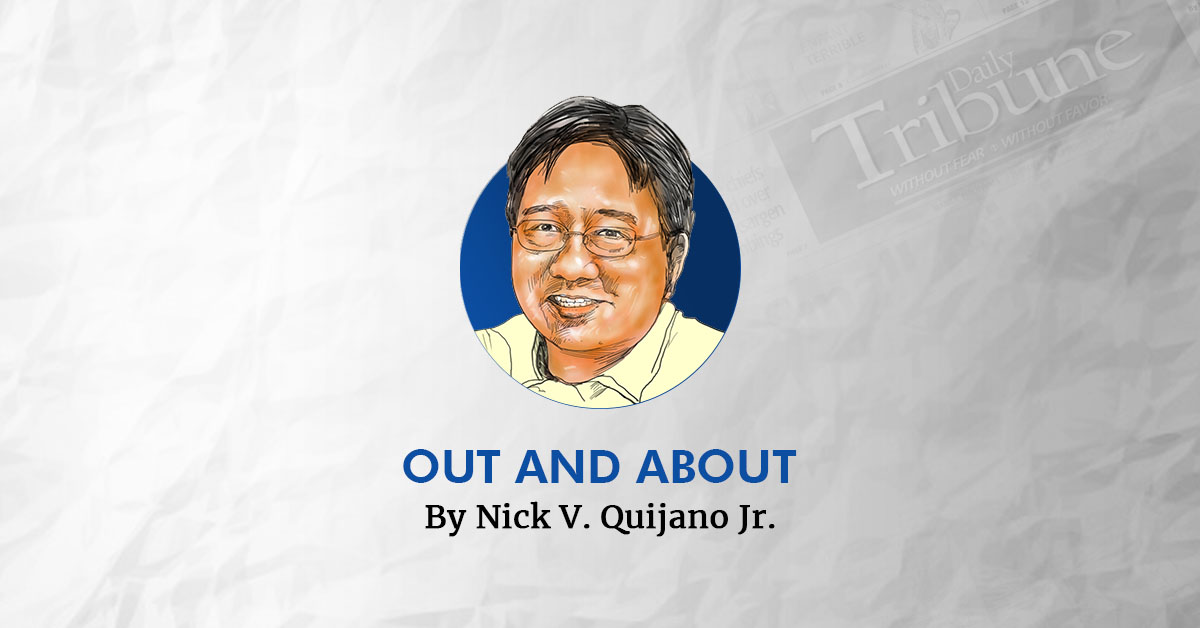With nature nakedly demonstrating last Friday how polluted Metro Manila has become, we are left with no choice but to actively reclaim our birthright to clean air.
Nothing is as essential to human life as the air we breathe. We repeatedly breathe between 12 and 20 times a minute, perhaps 20,000 times a day, until we give out our last breath at the close of life.
But life-affirming breathing can be quickly and severely compromised as happened last week when unhealthy pollution-related smog, the portmanteau word for polluted smoke and fog, made its presence felt.
Nevertheless, scores quickly dismissed the evident smog as a mere annoyance. Many even falsely attributed the enveloping smog as coming all the way from Taal Volcano. But Taal’s volcanic emissions (vog) weren’t drifting towards Metro Manila.
Lightly dismissing, even denying the poisoned air, this hiding-in-plain-sight threat to our health amounts to stupidity and gambles with the future well-being of our children and grandchildren.
First, however, a word about how nature tersely uncovered Metro Manila’s dirty air.
The visible smog happened because of an atmospheric commonplace called “thermal inversion.”
“As air rises into the atmosphere and its altitude increases, it gets colder. But this cold air pushes smoke and fog downwards, so the smoke and fog cannot rise or be dispersed. So, if you notice, the entire Metro Manila and nearby provinces have overcast skies. That’s smog,” explained Science and Technology Secretary Renato Solidum Jr. of the phenomenon.
“Smog is typically present in the morning…and while thermal inversion is happening, it won’t be dispersed. If winds become stronger and we no longer have thermal inversion, the smog will eventually get dispersed,” Solidum further explained.
Last Friday wasn’t particularly windy — noticeably sporting enormous fluffy cirrocumuli clouds — which the weather bureau said could have “reduced surface heating,” which allowed the haze to persist for a longer period.
As a result, Metro Manila and nearby provinces smothered in smog the whole day of Friday, prompting several local governments to cancel classes and science officials to advise people to wear masks and close doors and windows.
Rain in the following days washed away the smog, allowing for a temporary respite.
Scientists can’t categorically guarantee that another “thermal inversion” won’t happen again.
Significantly, both Solidum and the Department of Environment and Natural Resources said the smog “may be primarily attributed to emissions from heavy vehicular traffic, especially during rush hour.”
Smog caused by vehicular emissions is technically called “petrochemical smog” but is more famously known as “Los Angeles smog.”
Petrochemical smog causes reduced visibility, eye irritation, respiratory distress, and plant damage.
Sadly, science officials blaming the smog on vehicle emissions tell us about the kind of world Metro Manila’s urbanites have chosen to live in. They put their need for vehicles over the crucial human need for clean air.
Choosing dirty air is proving to be a brewing health crisis, with the DENR announcing that the air quality in Metro Manila is nearing “acutely unhealthy” levels.
The DENR said the recent air quality index or AQI — which monitors six criteria pollutants to determine how clean or polluted the air is — showed dangerous air quality levels in Parañaque City, Makati City, and Pateros.
So, as we heedlessly burn the same oil and gas that we supposedly can’t survive without daily, it is wreaking, as yet, untold health damage in the here and now.
True, weaning ourselves off the fuels tightly woven into the fabric of our modern urban lives is enormously difficult.
But to have a quality life, we must recognize that we can’t do without cleaner air. We better start doing something about our air before it’s too late.
